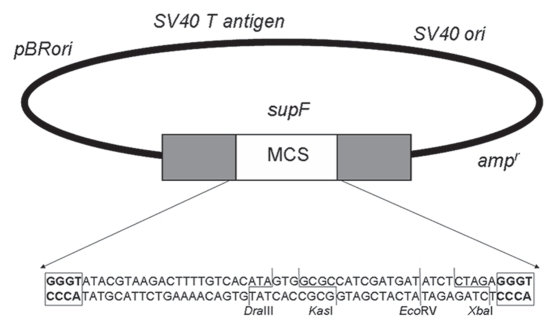Figure 5.
Organization of the SupF22 plasmid. The SupF22 plasmid contains the ampicilin resistance gene (bla) and the pBR327 ori from πAN7, the ori and T antigen coding region from SV40 and the IG region of M13. This plasmid also harbors the SupF gene, which encodes an amber suppressor tyrosyl-tRNA, interrupted by a multicloning site flanked by two GGGT sequences (bold in box frames). This renders the amber suppressor gene non-functional. Repair by MMEJ of a SupF22 plasmid linearized within the multicloning site and utilizing the aforementioned GGGT microhomologies results in deletion of the intervening multicloning site along with one GGGT repeat. This restores the functionality of the amber suppressor tRNA in the plasmid, which is then used to transform the indicator MBM7070 bacterial strain. This strain harbors an amber mutation within the lacZ gene. Reversion of the mutated SupF gene to a functional one by MMEJ is therefore scored as blue colony formation with the indicator strain on agar plates containing IPTG and X-gal. Restriction endonuclease sites within the multicloning site are indicated.

